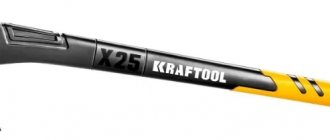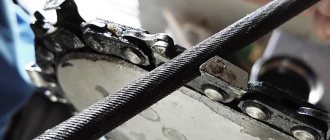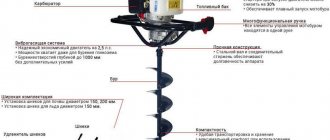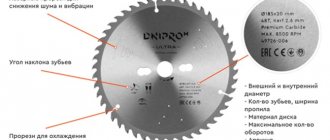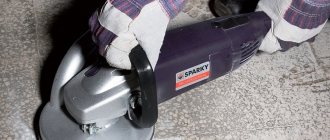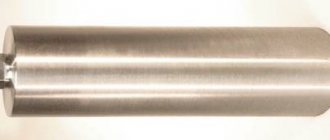June 13, 2019
When communicating on construction-related forums, you can very often come across the same question, how to properly drill concrete with a crown, tiles, socket boxes, and so on. And this question is asked by people who do not work in the construction industry. Indeed, during work, many people have to drill holes in solid materials, be it concrete or other material. Many incompetent people think that this process requires a certain level of knowledge and skills from a person, and as a result, they resort to using the services of professional builders. But this is far from true.
In this article we will tell you how to work at a professional level for a person who has never even picked up basic construction tools. We’ll also look at this in detail and give a comprehensive answer, so let’s get started!
Many people think that there are only one type of crowns for working on concrete, but this is a very gross misconception. As a rule, they are distinguished by their design and appearance. In order to choose the right tool for the wall you need, and select the required diameter, let’s consider their types.
Pobedite bit for drilling
These are the most versatile and at the same time cheapest crowns. Cheapness, coupled with a sufficient working resource, makes this type of crown the most popular among other types when it comes to performing a small amount of work. This is where we will focus. The design is very simple, hence the main parameter - reliability. The main element is the “cup”; this is what you should pay attention to when purchasing products. When changing crowns, it becomes possible to select the required drilling depth. Therefore, if you need to drill a hole in depth with a crown, then it is best to choose more massive crowns. There are special (professional) crowns, they are very strong, but their price is expectedly higher. But even with a simple household tool you can make very precise cuts, but you must comply with the permissible amount of work, otherwise there is a high risk of early wear of the pobedite bit.
Important!
Pobedite bits are designed exclusively for dry drilling and should not be watered at all. The material does not tolerate sudden temperature changes very well. It is also necessary to know for sure whether there is steel reinforcement in the building’s structure; if so, then you need to work extremely carefully, and moreover, there is a risk of breaking the crown. If you are sure that there is definitely no reinforcement, then you can safely move on to the second part of your work, namely direct drilling.
Let's proceed from the fact that there is no reinforcement in the house, and we naturally choose pobedite crowns. They are very cheap (relatively speaking) and are ideal for small-scale work.
Purpose
Construction work requires the use of high-quality and most effective drilling elements. During the repair process, it may be necessary to drill through dense monolithic slabs and make recesses for switches and sockets.
When working with concrete walls, one of the most effective drilling elements are diamond core bits for reinforced concrete. Correct selection of size and adequate operation of the device will ensure high productivity and long service life of the tool.
Tools with a cavity inside, used for drilling holes and drilling through concrete of any strength
The use of diamond cylinders is relevant in the following situations:
- Work with a monolithic structure for the purpose of further installation of fasteners for the staircase system.
- The versatility of the device for reinforced concrete and concrete allows the use of crowns to make holes of various depths and diameters when performing facade work.
- Application for further installation of boxes for sockets, drawers and other hanging structures.
- Laying communications through reinforced concrete monoliths, namely working with plumbing, heating risers, electrical wiring, exhaust system, and so on.
The use of diamond crowns allows you not only to speed up and significantly simplify the tasks, but also to complete them as efficiently and accurately as possible.
How to drill a wall with a crown
We take a standard diameter of 70 mm, because we are going to drill holes for sockets. The tool should be checked again; there should be no traces of soldering or welding on the crown. If there are any, it will simply be impossible to work, since this is a factory defect. As a tool, we will use the most common hammer drill, with an SDS plus shank.
It is advisable to use a hammer drill with a power of up to 800 watts inclusive; more powerful ones will exert very high pressure on the crown when drilling. And keeping the hammer drill evenly pressed against the wall is very difficult.
We will work exclusively in drilling mode, and not in impact mode. This small nuance must be clarified, otherwise it can easily lead to breakdown. The room in which the repair work will be carried out will be very dusty, and for this you need to buy a spray bottle to humidify the room itself, and not the crown. It is also worth considering the fact that when working with a powerful hammer drill, small fragments will fly in all directions, sometimes they are very sharp, here you need to buy personal eye protection, and take care of work clothes that will cover your arms and legs. Glasses will allow you not only to protect your eyes from unwanted injuries and damage, but also to completely control the entire process, rather than letting the work take its course.
TOP 16 best diamond crowns for socket boxes
| Photo | Name | Rating | Price | |||
| The best diamond crowns for premium socket boxes | ||||||
| #1 | PRACTICE 917-293 162 mm | ⭐ 5 / 5 | Find out the price | |||
| #2 | HILTI SPX-L DIAMOND FOR CONCRETE X-CHANGE 82 MM | ⭐ 4.95 / 5 4 - votes | Find out the price | |||
| #3 | Dr. Schulze DS-LB Premium 82 mm | ⭐ 4.9 / 5 6 — votes | Find out the price | |||
| #4 | Crown Messer 06-20-082 82 mm | ⭐ 4.85 / 5 3 - votes | Find out the price | |||
| The best budget diamond drill bits for socket boxes | ||||||
| #1 | Wolverine 500068 68mm | ⭐ 5 / 5 1 - voice | Find out the price | |||
| #2 | Bison29865-73 73 mm | ⭐ 4.95 / 5 4 - votes | Find out the price | |||
| #3 | d28 KURS | ⭐ 4.9 / 5 | Find out the price | |||
| #4 | HRD150 42x150 mm, M16 Niborit v1007 | ⭐ 4.85 / 5 | Find out the price | |||
| The best diamond bits for socket boxes in terms of performance | ||||||
| #1 | Diamond bit (102/150 mm M16) KEOS DC102.150 | ⭐ 5 / 5 1 - voice | Find out the price | |||
| #2 | Crown (68/70 mm M16) KEOS DC068.70 | ⭐ 4.95 / 5 5 — votes | Find out the price | |||
| #3 | New Formula 68 mm TRIO-DIAMOND NF068 | ⭐ 4.9 / 5 6 — votes | Find out the price | |||
| #4 | Diamond bit for concrete Hilberg Laser (68 mm) TRIO-DIAMOND | ⭐ 4.85 / 5 3 - votes | Find out the price | |||
| #5 | Diamond bit for concrete (80 mm) TRIO-DIAMOND GC788 | ⭐ 4.8 / 5 2 - votes | Find out the price | |||
| #6 | DIAM 311103 M16-SDS+ (82x70 mm) | ⭐ 4.75 / 5 5 — votes | Find out the price | |||
| #7 | Diamond bit for concrete (68x70 mm M16/HEX12) Diam 311116 | ⭐ 4.7 / 5 3 - votes | Find out the price | |||
| #8 | Diamond bit (68 mm SDSplus/M16) Enkor 48280 | ⭐ 4.65 / 5 3 - votes | Find out the price | |||
Which crown would you choose or recommend for drilling socket boxes?
Take the survey
Drilling a concrete wall with a crown
It is necessary to work extremely carefully, first we very quietly drill the first 5 mm of the wall at extremely low speeds, this is necessary so that in the further process of work we do not go sideways and the hole is not crooked. Next, we continue to work; you should not squeeze the hammer too much, because making a hole should occur solely due to the rotational movements of the head. If there is a need to increase the original diameter, then you can resort to simple manipulations with rocking, this will allow you to slightly expand the hole. If you hold the hammer in a straight position, there is a chance that the diameter will be slightly narrower.
But don’t be overzealous; after a couple of minutes of active work, you should take out the crown, look at its condition and let the tool with the attachment cool. The tail may simply burst due to increased load. Before removing the hammer drill, do not stop its operation completely, this will eliminate the possibility of damage to the hammer.
Next, take a hammer and a good chisel, then insert the chisel into the lower part of the hole made and hit it. It is necessary to drive the chisel approximately 2 mm. This will help you extract everything that was left inside during the drilling process and compressed into the hole. You need to work carefully so as not to accidentally expand the required diameter.
Thus, gradually increasing the pace, it is necessary to make the necessary hole in the concrete wall, but if you have reinforcement in the wall, then the entire procedure should be carried out similarly to that described, but only on the condition that the pobedit crown will need to be replaced with a diamond one. But the diamond drill should be constantly watered with water to simplify the work, but you should not water the drill itself.
After finishing the work, completely clean the holes from dust and dirt. We collect all the tools, and you can begin installing the necessary equipment in the wall.
The operating principle of diamond bits for concrete
Diamond bits can vary in diameter, connection method to the shank, size, quality and shape of the cutting segments. Products marked “M”, that is, with a soft cutting coating, are used for working with hard concrete surfaces. They self-clean from dust generated during operation, which makes the drilling process more efficient.
Diamond core bits are used for drilling reinforced concrete using a non-impact method, which protects load-bearing structural elements
Depending on the size of the cylinder, a diamond bit can have 5 cutting elements with a diameter of 6.5 cm or 32 cutting segments for a device with a caliber of 65 cm.
For standard grades of concrete, crowns marked “C” are used, indicating that the spraying has medium hardness. Coating “T” (hard) is used when operating devices at reduced speeds.
Diamond bits for drilling concrete can work with both dry and wet drilling methods. Nozzles designed for drilling without water supply have specially shaped holes in the cylinder body that help cool the edge during operation.
Diamond bits easily pass through reinforcement. During drilling, the concrete layer is destroyed only under the edge; at the end of the work, a cylinder of stone remains in the crown.
Diamond bits for concrete are equipped with soldered wide cutting segments with diamond abrasive
When making holes of significant diameter and depth, the drilling machine can be secured using anchors. This position promotes more accurate drilling, does not create a lot of dust, prevents jamming of the cylinder and reduces the noise level. Holes for socket boxes are often made manually.
Resuscitation and care rules, overheating protection
If a diamond bit for concrete has ceased to perform its functions normally, first of all, it is advisable to find out the causes of the malfunction.
First, the possibility of failure due to wear is established, then the body is inspected for cracks and the consequences of horizontal runout. If everything is in order, you can solder several segments to replace those that are worn out.
To extend the time between repairs and significantly increase service life, craftsmen recommend doing everything in strict accordance with the rules specified in the instructions. The crown is afraid of overheating and cannot be used to work with materials that are not listed in the technical data sheet. It is also important to ensure that the water cooling regime is not disturbed in wet models. Diamond bits for brazing concrete must be of high quality, made in accordance with standards.
Overheating protection is provided by the cooling system. When cutting wet, water flows in the required volume and continuously, cooling the diamonds. To operate the tool, the pressure in a regular water supply is sufficient. The required volume of water is determined based on the diameter of the crown head (all data must be indicated in the instructions). Exceeding the value may make it difficult to advance the tool; if there is little water, the segments are more likely to wear out.



